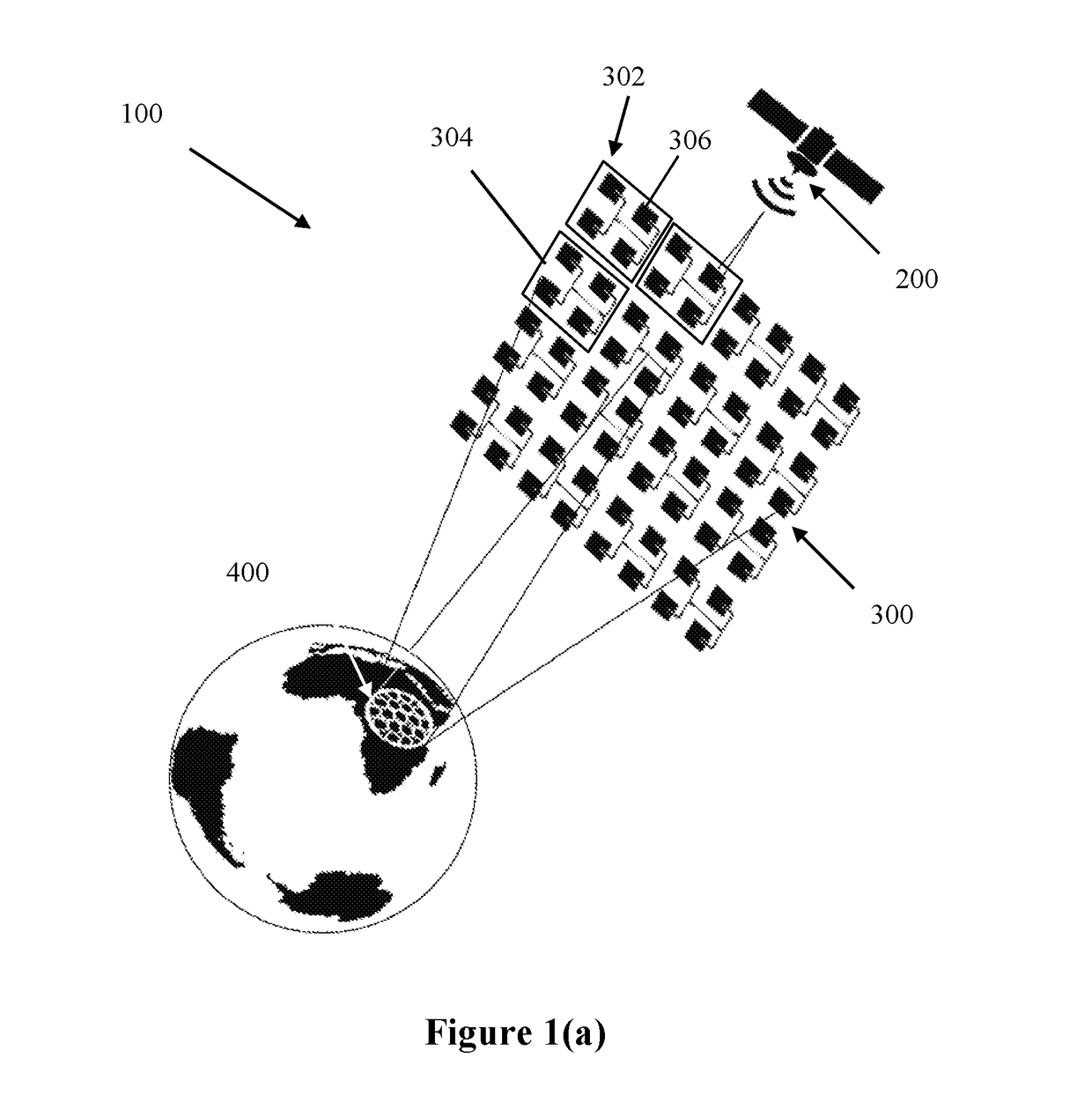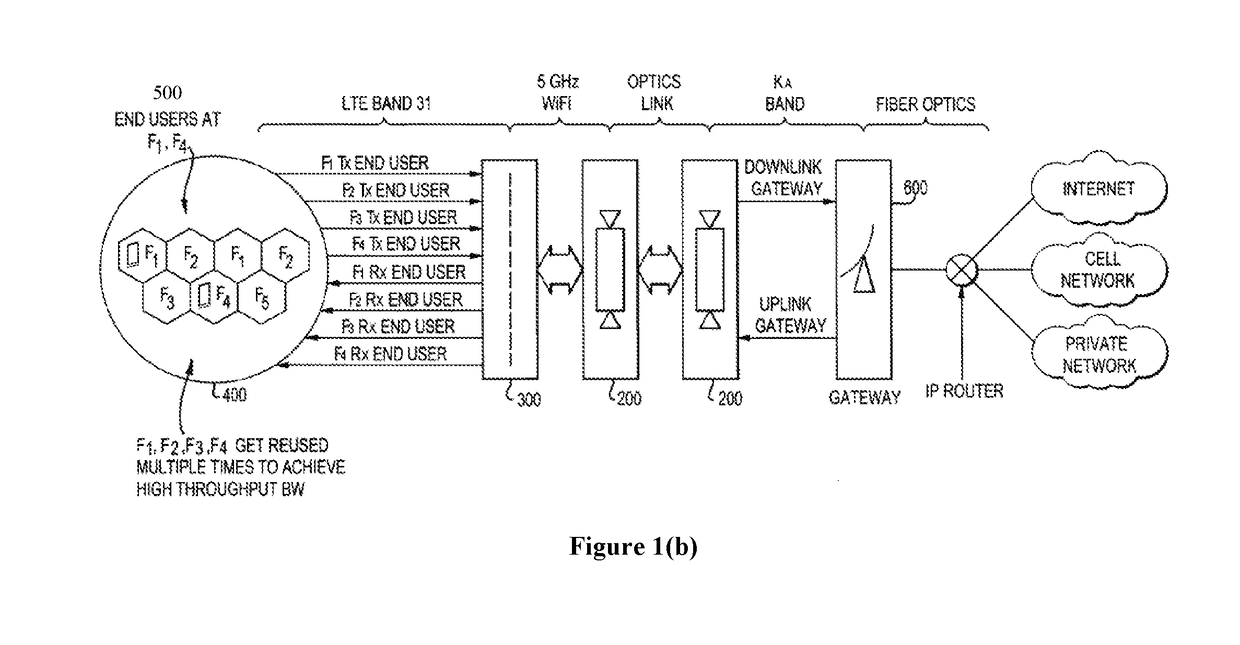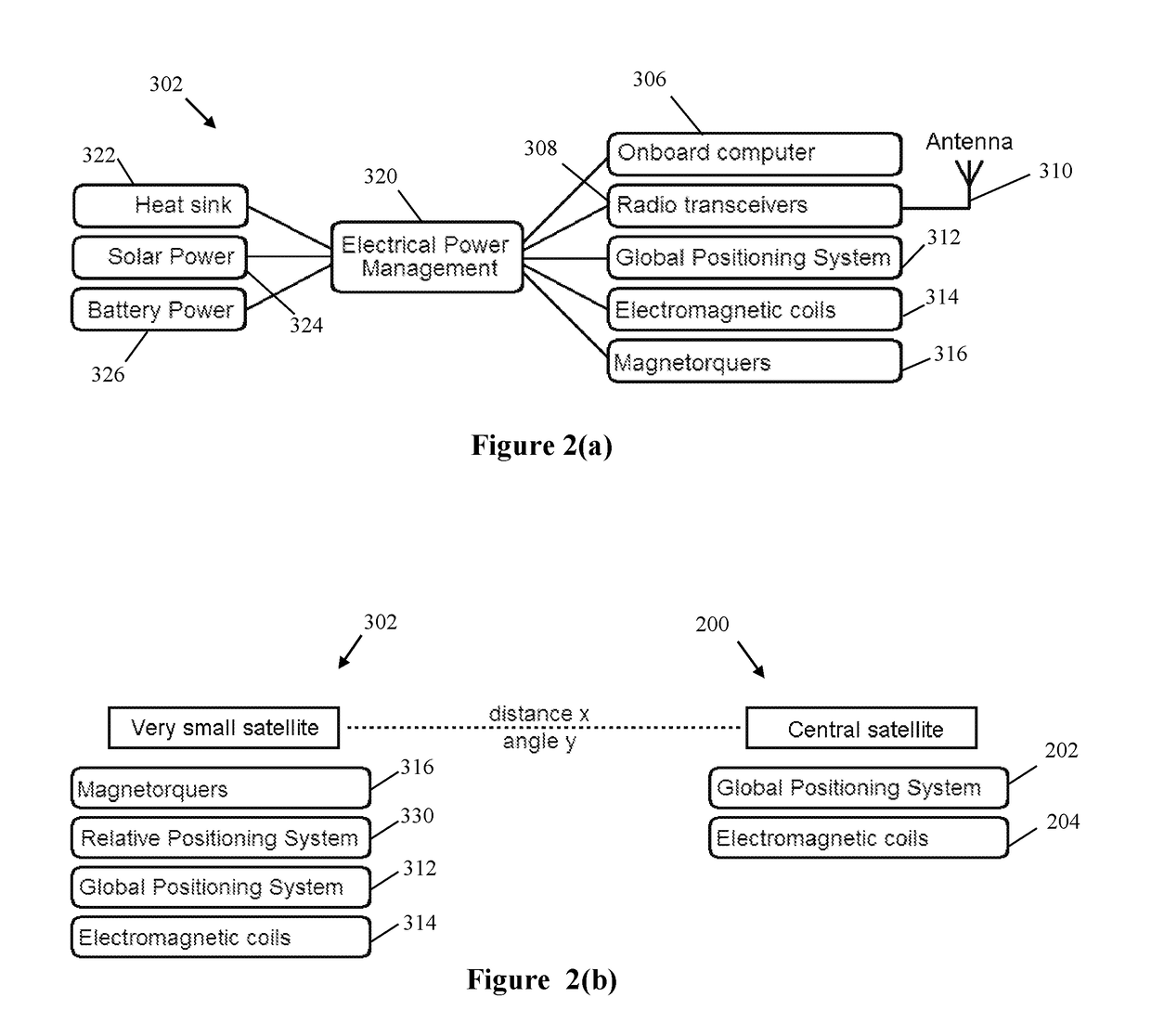System and method for high throughput fractionated satellites (HTFS) for direct connectivity to and from end user devices and terminals using flight formations of small or very small satellites
a technology of high throughput fractionation and satellites, applied in diversity/multi-antenna systems, site diversity, network topologies, etc., can solve the problems of increasing the weight and cost of batteries, increasing the weight and cost of satellite power handling components, and structurally one aperture of anantenna, etc., to reduce the launch weight, launch cost, and large aperture
- Summary
- Abstract
- Description
- Claims
- Application Information
AI Technical Summary
Benefits of technology
Problems solved by technology
Method used
Image
Examples
Embodiment Construction
[0025]In describing the preferred embodiments of the present invention illustrated in the drawings, specific terminology is resorted to for the sake of clarity. However, the present invention is not intended to be limited to the specific terms so selected, and it is to be understood that each specific term includes all technical equivalents that operate in a similar manner to accomplish a similar purpose.
[0026]Turning to the drawings, FIG. 1(a) shows the satellite communication system or HTFS 100 in accordance with one exemplary, illustrative, non-limiting embodiment of the invention. The satellite system or satellite formation 100 includes a plurality of small or very small elements such as small or very small satellites 302 (e.g., slave or remote satellites) and a local controller and relay satellite 200 (e.g., master or central satellite, also referred to here as the control satellite). The satellites 302 can be any suitable satellite such as for example, altitude-controlled very...
PUM
 Login to View More
Login to View More Abstract
Description
Claims
Application Information
 Login to View More
Login to View More - R&D
- Intellectual Property
- Life Sciences
- Materials
- Tech Scout
- Unparalleled Data Quality
- Higher Quality Content
- 60% Fewer Hallucinations
Browse by: Latest US Patents, China's latest patents, Technical Efficacy Thesaurus, Application Domain, Technology Topic, Popular Technical Reports.
© 2025 PatSnap. All rights reserved.Legal|Privacy policy|Modern Slavery Act Transparency Statement|Sitemap|About US| Contact US: help@patsnap.com



